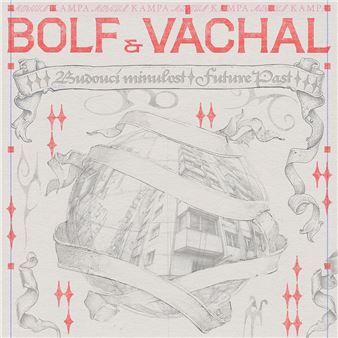Six Fingers
Six FingersвҖҷ is the title of the exhibition and a metaphor of an anomaly that is like any irregularity, an expression of originality. Both artists combine a sense of traditional expression and their work is characterized by rawness, which is not only a search for authenticity, but also a possible definition of their current style. While OndЕҷej FilГӯpek is represented on the exhibition with his work from recent years, Jakub JanovskГҪ prepared for the exhibition the most up-to-date compositions. He presents the paintings in which he develops ideas from an environment in which mostly faceless children play a major role. Jakub JanovskГҪ deliberately conceals and masks their faces, thus turning them into characters as universal symbols. In addition to the rawness of expression, for JanovskГҪвҖҷs and FilГӯpekвҖҷs works there is a symptomatic depiction of a certain timelessness and thus an obvious mystery that encourages the viewer to participate directly in the plot.
ChildrenвҖҷs games are mostly bad, and just as finger counting, are associated with exclusion. The childrenвҖҷs world is brutal, and in the case of the portrayal of Jakub JanovskГҪ, it is a kind of merciless metaphor for the adult world. A child who takes on the role of an adult does not know that the world on the verge of adulthood is much more cruel and insidious. Just as in the painting вҖҳThe EndвҖҷ, depicting the end of civilization, love may suffocate before its protagonists mature. The basic principle of JanovskГҪвҖҷs and FilГӯpekвҖҷs works are the fierce truthfulness of the concept that does not obscure the hopelessness of human life in all its forms.

Six FingersвҖҷ is the title of the exhibition and a metaphor of an anomaly that is like any irregularity, an expression of originality. Both artists combine a sense of traditional expression and their work is characterized by rawness, which is not only a search for authenticity, but also a possible definition of their current style. While OndЕҷej FilГӯpek is represented on the exhibition with his work from recent years, Jakub JanovskГҪ prepared for the exhibition the most up-to-date compositions. He presents the paintings in which he develops ideas from an environment in which mostly faceless children play a major role. Jakub JanovskГҪ deliberately conceals and masks their faces, thus turning them into characters as universal symbols. In addition to the rawness of expression, for JanovskГҪвҖҷs and FilГӯpekвҖҷs works there is a symptomatic depiction of a certain timelessness and thus an obvious mystery that encourages the viewer to participate directly in the plot.
ChildrenвҖҷs games are mostly bad, and just as finger counting, are associated with exclusion. The childrenвҖҷs world is brutal, and in the case of the portrayal of Jakub JanovskГҪ, it is a kind of merciless metaphor for the adult world. A child who takes on the role of an adult does not know that the world on the verge of adulthood is much more cruel and insidious. Just as in the painting вҖҳThe EndвҖҷ, depicting the end of civilization, love may suffocate before its protagonists mature. The basic principle of JanovskГҪвҖҷs and FilГӯpekвҖҷs works are the fierce truthfulness of the concept that does not obscure the hopelessness of human life in all its forms.

 ARTISTS
ARTISTS











